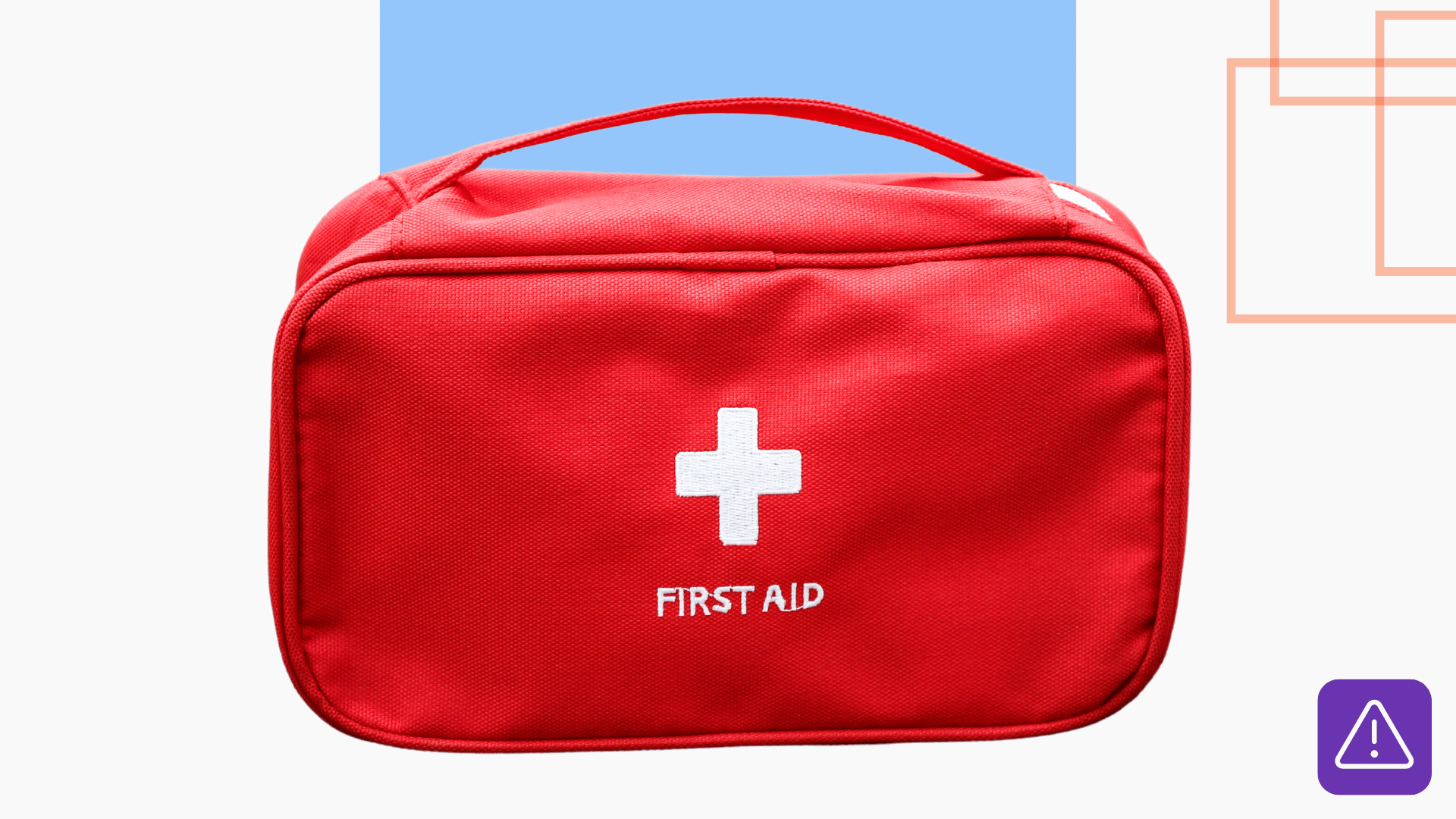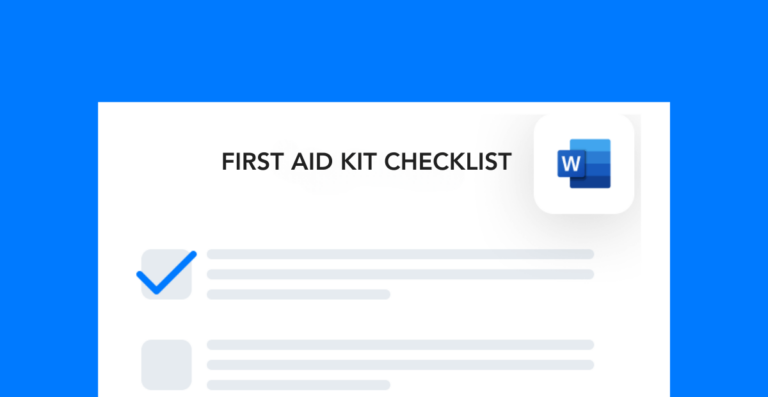During emergencies, workers should be prepared to respond to injuries until medical professionals can come on scene. Use this first aid toolbox talk to discuss the basics of providing aid and reporting serious injuries to managers. That way, your employees can be active participants in your incident management protocol.
Free checklist!
Download this free checklist to get an idea of the first aid supplies you should always have on hand for preparation. Incorporating these supplies into your first aid toolbox talk will ensure you’re fully prepared.
First aid toolbox talk overview
In this toolbox talk, we’ll go over:
- Reasons for administering first aid
- Basic first aid practices
- Escalating injuries to management
Ideally, you will never need to administer first aid at work. However, accidents do happen, and it is important to be prepared. Moreover, while knowing how to respond to injuries matters, knowing when to escalate a situation is just as critical—especially in the context of first aid toolbox talks. Therefore, discussing procedures in advance can make all the difference.
Reasons for first aid
The purpose of first aid is to help someone with an injury or illness before they can get medical treatment. Reasons for providing first aid include:
- The injury or illness requires immediate attention to control symptoms.
- Medical attention isn’t immediately available and there’s a lag in response time.
- The affected person may die without first aid measures.
In an emergency, knowing basic first aid can mean the difference between life and death. Acting quickly and effectively gives you the best chance to stabilize the situation until professional help arrives.
Therefore, discussing emergency scenarios during a first aid toolbox talk can be invaluable. These conversations help reinforce the critical points that every worker should understand and prepare for.
Basic first aid practices toolbox talk
Everybody should know some first aid basics in case an accident happens at work. Here are some of the main practices to follow in what is discussed during the first aid toolbox talk:
- Always know the location and contents of the nearest first aid kit.
- Make sure that first aid kits are easily accessible and stocked for use.
- Treat cuts and scrapes with clean water, an antiseptic solution, and a bandage.
- If someone is bleeding, apply pressure to the wound and elevate it if you can.
- For common sprain and strain injuries, use the R.I.C.E method of rest, ice, compression, and elevation.
- Avoid treating burns with ice or lotion. Instead, run them under cool water and apply a sterile dressing to avoid dirt and irritation.
- If someone is in shock, do your best to keep them calm until help arrives.
- Anyone with a break or fracture should stay as still as possible while waiting for help, and a toolbox talk can prepare everyone on how to assist, highlighting the role of first aid toolbox talk preparation.
Escalating injuries to management
If you’re not trained to administer first aid, it’s best to let a qualified person do it. When multiple people are around during an accident, someone should always stay with the injured worker while someone else calls for help.
Per the site emergency preparedness plan, you should escalate all workplace injuries and illnesses to management. In most cases, the safety team will handle first aid and call emergency services if necessary. Discussing these procedures during a first aid toolbox talk ensures everyone knows what to do.
They’ll also begin documenting the incident, so they can figure out why it happened and how to prevent it in the future. That’s where you can help the most—by providing details of the situation. There’s almost always something you can do to help, whether you’re providing first aid or engaged in a first aid toolbox talk.




